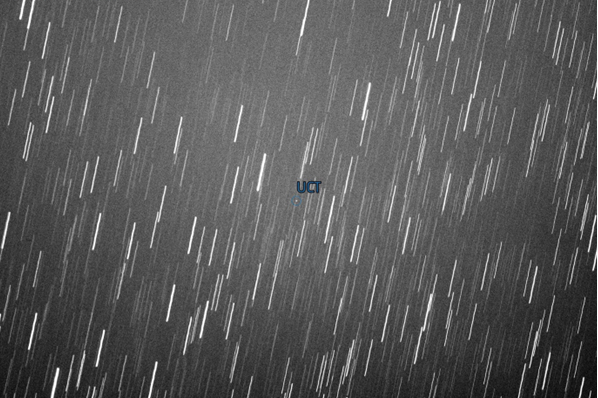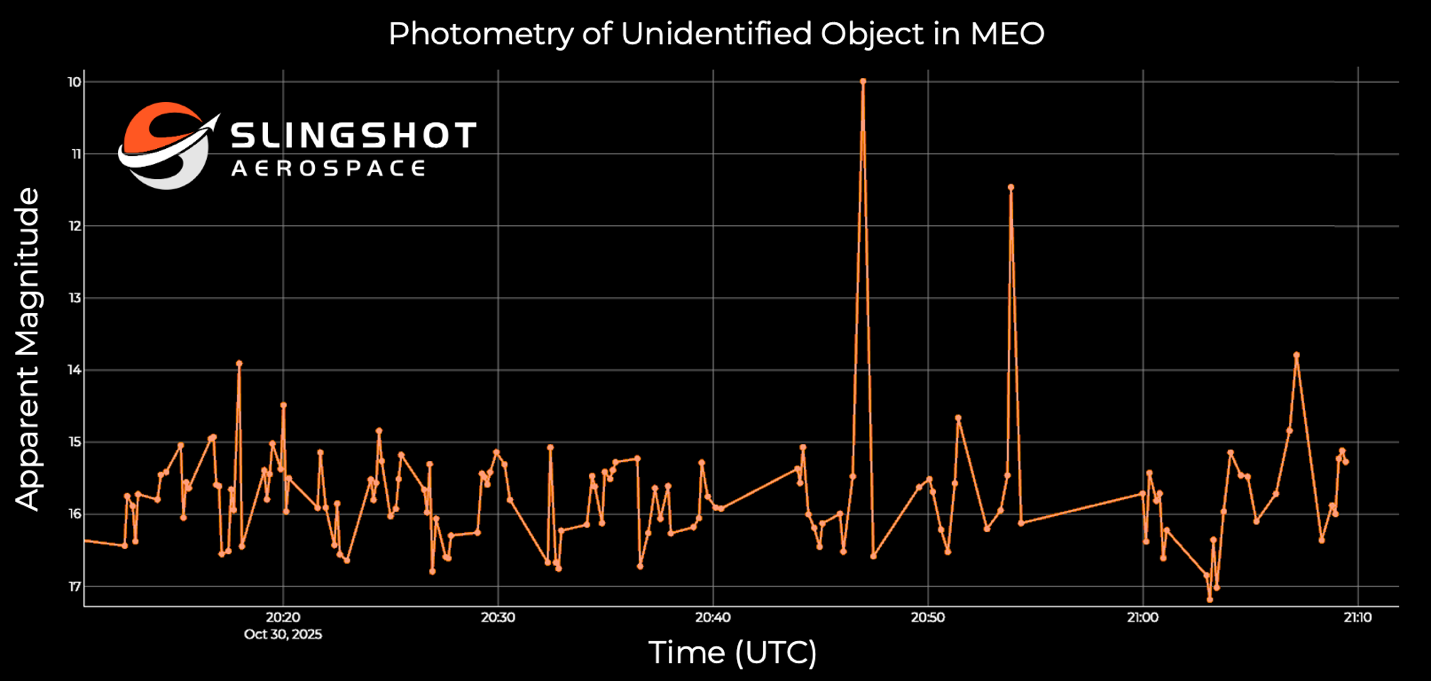.png)
The Lost Satellite: Inside Slingshot’s Hunt for Russia's Mozhayets-6
On 13 September 2025, Russia launched a Soyus-2.1b rocket from the Plesetsk launch facility to deploy a GLONASS navigation satellite and the Mozhayets-6 research satellite. Shortly after the launch – identified as 2025-206 – initial orbit data was made available in the US public catalog for both the rocket upper stage (FREGAT R/B, NORAD 65591) and the GLONASS payload (COSMOS 2595, NORAD 65590). The GLONASS object was in medium Earth orbit (MEO) at an altitude of approximately 19,100 km, but no data was published for Mozhayets-6 apart from the assignment of a NORAD ID and a name (officially COSMOS 2596, NORAD 65589). After five weeks without orbital data posted in the US public catalog, Slingshot set out to help locate this missing object.
A post on X from s2a systems on 14 September 2025, shortly after launch, included imagery that showed a dim object adjacent to the GLONASS payload. Slingshot analysts hypothesized this was likely Mozhayets-6, indicating that the two payloads were deployed into the same orbital plane. Additional information on Mozhayets-6, from Slingshot’s Seradata database, indicated the mass of the satellite was around 100 kg. Slingshot’s research and development (R&D) team leveraged these facts to estimate the expected brightness and reduced the search volume. The results indicated an expected brightness between 15th – 17th visual magnitude (mv). The signature would be dim, but well within the limits of Slingshot’s gimbaled telescope systems. Based on that same estimated mass, Slingshot astrodynamicists further hypothesized that Mozhayets-6 would not have been able to maneuver far out of plane from COSMOS 2595.
The Slingshot Global Sensor Network (SGSN) was subsequently tasked to scan this refined search volume. Within hours, gimbaled telescopes located at Slingshot’s sites in Spain and Morocco established a set of uncorrelated tracks on an object within that search volume. An uncorrelated track (UCT) is a sequence of observations that does not match an orbital state associated with catalogued objects, either within the US public catalog or within Slingshot’s commercial catalog.

Using the observations collected during this search, orbital analysts performed initial orbit determination (IOD) through Slingshot’s Multi-Frame Assignment Space Tracker (MFAST) software. The subsequent solution was used to task further collections from multiple global telescope systems. This led to additional simultaneous collections by SGSN sensors, confirming the existence of the unidentified object. The object’s orbit seemed to be closely aligned with the predicted orbital plane of Mozhayets-6.
In addition to astrometric (positional) data, Slingshot’s sensors also collected over an hour’s worth of photometric (brightness) observations on the object. This time series of photometric data enabled orbital analysts to assess the relative stability of the spacecraft being tracked. Stable objects typically exhibit consistent photometry over short time periods, with fluctuations as the telescope look angles change over the course of a pass. In the case of this object, the photometric signature fluctuated significantly between 10th – 17th mv, with the bulk of the observations staying in the predicted 15th – 17th mv range. This range closely aligned with the brightness range initially predicted by the Slingshot R&D team. The figure below shows the observed visual magnitudes of the unidentified object from a 1-hour period.

These findings, enabled by the combined power of Slingshot’s open-source intelligence product (Seradata), best-in-class data fusion application (MFAST), and the Slingshot Global Sensor Network (SGSN), combined with the close orbital proximity to COSMOS 2595 (low cross-track deviations) suggest that the unidentified object is in all likelihood Mozhayets-6.
Locating and identifying lost or new objects is a great example of how Slingshot’s suite of SDA products, sensor technologies, and subject matter expertise enable 24/7 insights across orbital regimes.
To see what Slingshot’s intelligence can uncover for your mission, book a demo today.